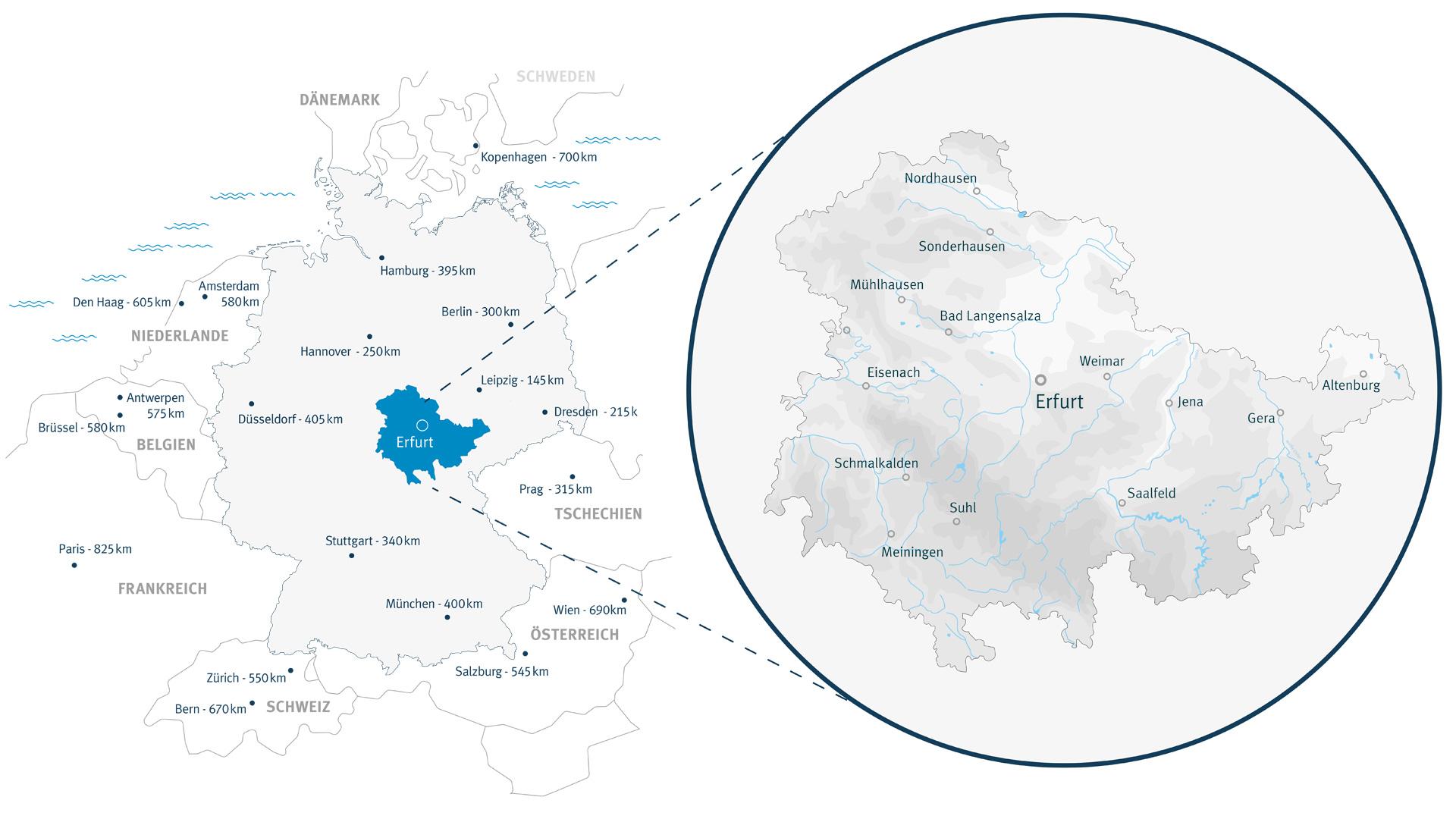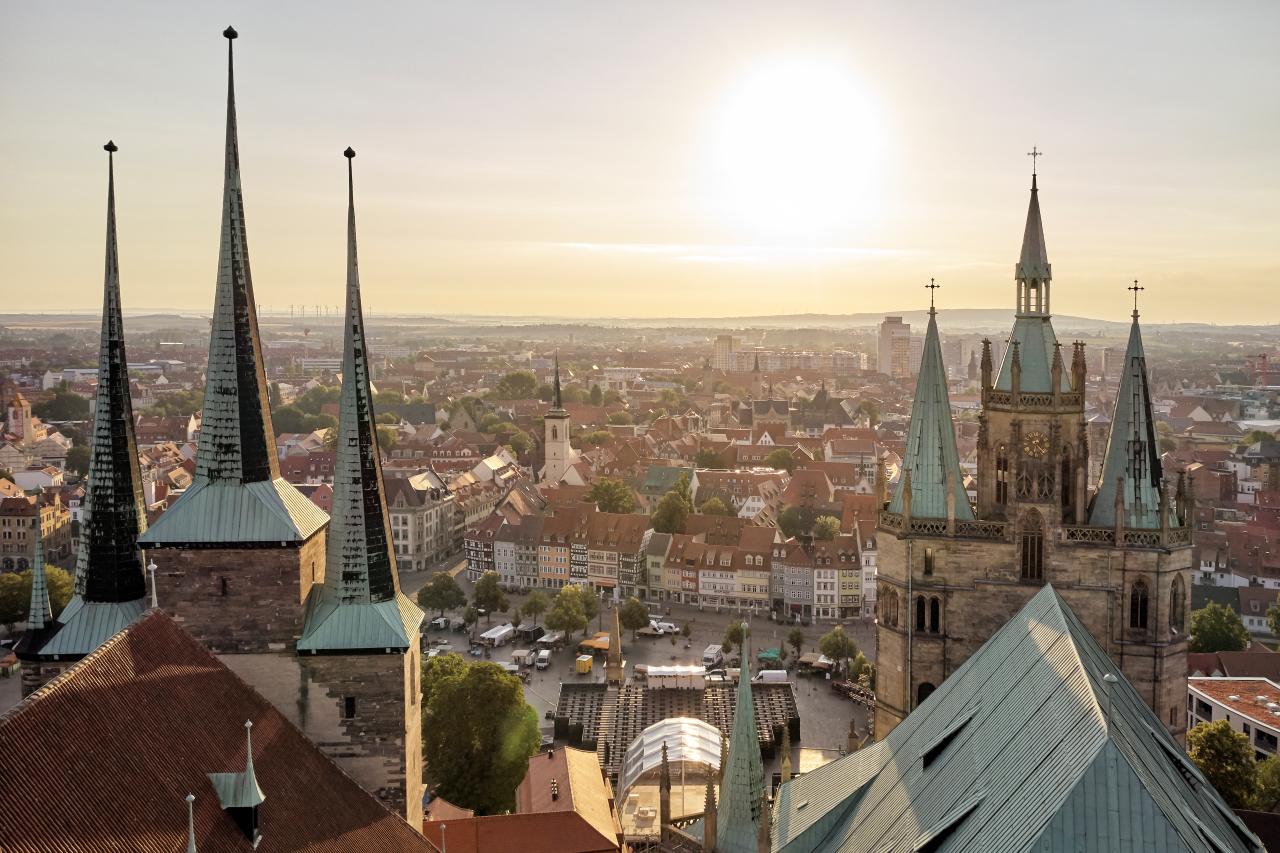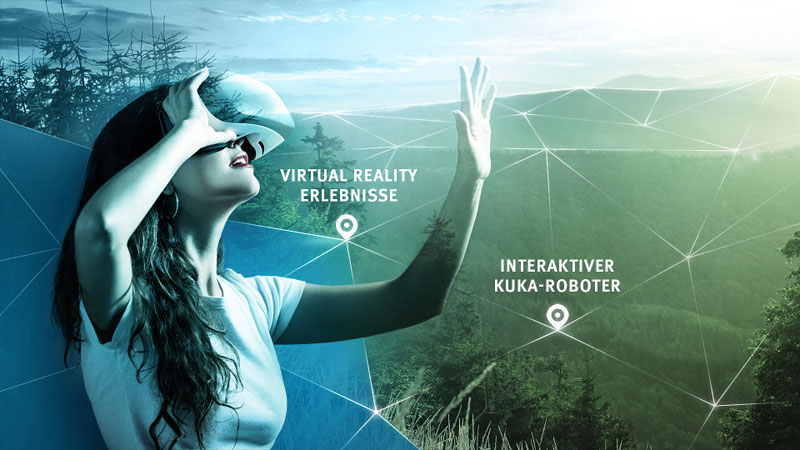Find the appropriate contacts for all issues associated with foreign markets' marketing. Right here!
Our regions
Erfurt
Thuringia's state capital is known for its beautiful historic city centre. The most famous sights are Krämerbrücke bridge, St Mary's Cathedral and the UNESCO-listed medieval Jewish heritage. The city is also closely associated with Martin Luther.
Travel offers for groups in Erfurt
Weimar
Once the European Capital of Culture, which it somehow still is. Hardly any other town has so much to offer, with 16 properties on the UNESCO World Heritage List. These include poets' residences, palaces and gardens as well as the early history of the "State Bauhaus".
weimar.de
Jena
Romantically situated in the Saale valley, Thuringia's largest university city and closely associated with the traditional "Carl Zeiss" company. The Zeiss Planetarium is one of the city's most famous attractions: history on the outside and high-tech on the inside.
Travelplaner
Thuringian Forest
Ideal hiking region and dream routes for mountain bikers. Here you can find Germany's most famous long-distance hiking trail, the Rennsteig, the birthplace of the Christmas bauble, Germany's oldest biosphere reserve, Olympic training centres for winter sports enthusiasts and plenty of views.
thueringer-wald.com
Saale-Unstrut region
The wine region in the north of Thuringia has an undisputed Mediterranean flair. The view of shell limestone cliffs, vineyards and palaces contributes to this. And offers that promise well-being for body and soul.
Travel planer Saale-Unstrut
Weimar country district
Cycling where the Bauhaus artists used to, discovering small farm shops, old castles and romantic moated palaces. The Weimar county district is a region for gourmets and culture lovers.
Hosts Weimarer country district
Wartburg-Hainich world heritage region
UNESCO cultural and natural world heritage sites meet here. It is only a short distance from Wartburg Castle to the primeval beech forests of the Hainich National Park. Towns such as Bad Langensalza and Mühlhausen border on the Hainich.
Host of the world heritage region
Southern Harz and Kyffhäuser region
The Kyffhäuser is Germany's smallest low mountain range. It lies close to the southern edge of the Harz Mountains. The mountain range is a place of legends and ancient history. Nearby is Bad Frankenhausen, which has historical links to the Peasants' War of 1525.
region-suedharz-kyffhaeuser.de
Altenburg county district
A relaxing idyll with a well-developed network of cycle paths and over 1,000 years of cultural history. Altenburg is known for its residential palace, the art treasures of the Lindenau Museum and as the home of the game of skat. A new interactive museum will be dedicated to gaming culture from 2026.
altenburg.travel
The Eichsfeld region
The East-West German border once ran through the Eichsfeld. The region is known for its Catholic traditions, picturesque villages and culinary specialities. You can visit border museums along the Green Belt.
eichsfeld.de
Vogtland
Gently rolling hills and green valleys and in between the once smallest principality of Germany. Culture lovers can explore castles and palaces or discover the designer Henry van de Velde in Gera.
vogtland-tourismus.de
Rhön region
The Rhön is characterised by wide open landscapes. It is a UNESCO biosphere reserve. Here you can enjoy magnificent views over an ancient volcanic landscape and visit a “star park”. The Rhön is one of 16 "International Dark Sky Reserves" worldwide.
rhoen.info
Of course, we can also sort the regions thematically instead of geographically. Thuringia's porcelain region, for example, stretches in a wide arc from central to eastern Thuringia. You have probably heard of traditional companies such as Kahla, Sitzendorf or the Volkstedt Porcelain Manufactory in Rudolstadt. Other nearby towns include Weimar, Saalfeld, Jena and Ilmenau. Or take a stroll along the "Green Belt". This is the former border region between East and West Germany. Rare plant and animal species now thrive where border fortifications once prevented access. In the border museums, you can learn more about the border history. Exhibitions show what happened there and what life on the border meant. Fans of (old) military technology will also get their money's worth. The Green Belt stretches for 763 kilometres along Thuringia's western and southern borders.
The Thuringian town experience
The Thuringian town experience is a relaxed mix of old town flair, cosy restaurants and historical sights. Erfurt is the largest city in Thuringia and has a very central location. Thanks to the ICE train connection, the city is also easy to reach by train, as are Eisenach and Gotha. Newcomers to Thuringia like to combine Erfurt in a programme with Weimar or Eisenach, the birthplace of J. S. Bach and the city of Wartburg Castle. All three cities are conveniently located on the A4 motorway. You can find a sample programme "Thuringia for beginners" here.
Of course, there are also recommendations for you outside the three cities for "beginners". Perhaps you would like to combine the Hainich National Park with the garden town of Bad Langensalza. Eleven themed gardens, including a Japanese garden and a rose garden, enchant visitors there. Or how about a combination of picturesque half-timbered houses, a Renaissance castle and a chocolate adventure world? You can find that in Schmalkalden. The tranquil town of Gotha is home to Germany's largest early Baroque palace complex, Friedenstein Palace. Its historical references extend to all the royal houses of Europe. And from Jena, you can explore the Saale valley and trace Thuringia's porcelain traditions in an entertaining setting at Leuchtenburg Castle. Find out more about Thuringia's historic towns at thueringer-staedte.de.

Thuringia is centrally located in Germany and Europe. The state is well accessible via the A4, A9, A71 and A73 autobahn connections and also connected with the ICE network of Deutsche Bahn. Within Thuringia distances are short. Most regions are well linked with regional train networks.





















